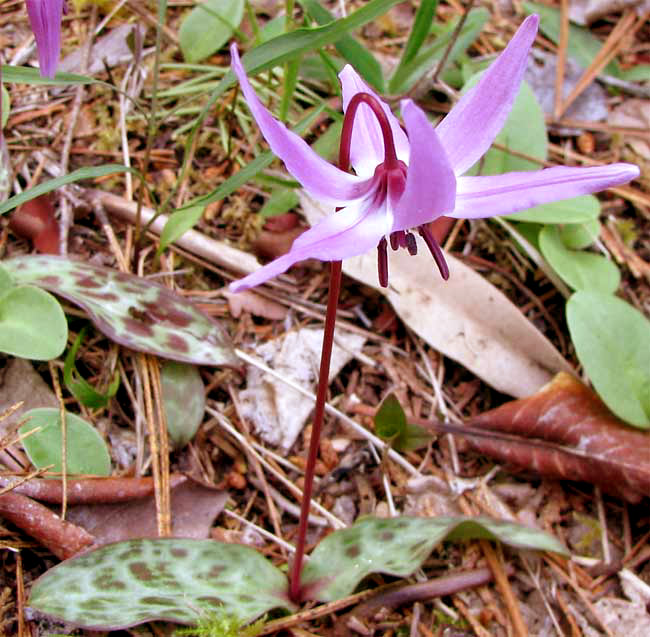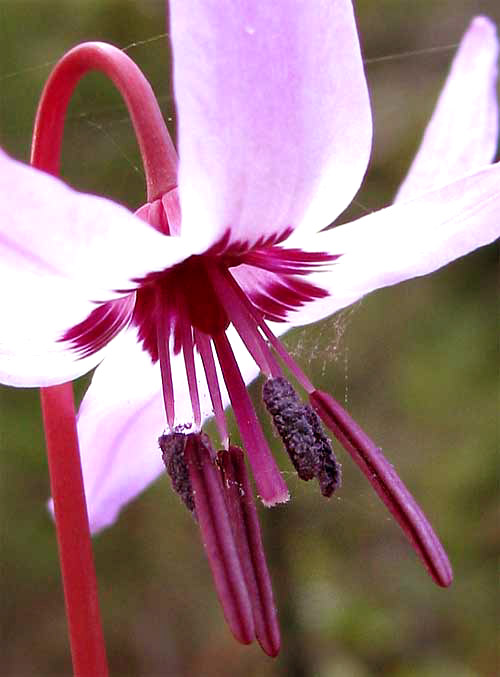Excerpts from Jim Conrad's
Naturalist Newsletter

from the the April 13, 2009 Newsletter, issued from Siskiyou National Forest west of Grants Pass, Oregon:
HENDERSON'S FAWN-LILY
When I finally got to step into the forest, what a surprise to see that among all those
"showy, violet- pink blossoms nodding on slender stems arising from rosettes of glossy, waxy leaves," there were actually two species! Moreover, one species was a dicot -- the above shooting-star -- while the other was a monocot, a member of the Lily Family. The latter was Henderson's Fawn-Lily, ERYTHRONIUM HENDERSONII, seen above.
A close-up of this species' nodding flower is shown below:

How curious that two species occupying very different positions on the phylogenetic Tree of Life and with very different floral anatomy should share so many gross features yet. In this fawn-lily the six, dark violet, downward-projecting stamens are not grown together into a cylinder as with the above shooting- star's five petals. You can plainly see the fawn-lily's down-pointing, slender style arising from the oval ovary in the purplish center of the corolla.
When I find two very unrelated species like this looking the same while sharing an ecological niche, I guess that the forces of convergent evolution are responsible. Something in this habitat makes it advantageous to be an herbaceous species flowering at this time, to have the flower colors they do, to arise from basal rosettes as they do, and to produce drooping flowers on recurved stems.
With this season's abundant drizzle I can guess that drooped flowers keep their sexual parts drier than sky-facing ones. I can also guess that having rosettes emerging when fall rains come, then slowly gathering resources during the long, dim winters here, represents a good strategy for a plant needing to issue substantial flowers here at the springtime rainy season's end. And the colors -- remembering that insects see purple as black, and that anything black surrounded by bursts of paleness must catch a bug's attention -- I can even halfway understand the flowers' colors and patterns. Still, seeing the consequences of convergent evolution so prettily developed on the forest floor right before me is something special, a good beginning to this season of naturalizing in a new place.
Henderson's Fawn-Lily is endemic just to here -- southwest Oregon -- barely reaching into Northern California.